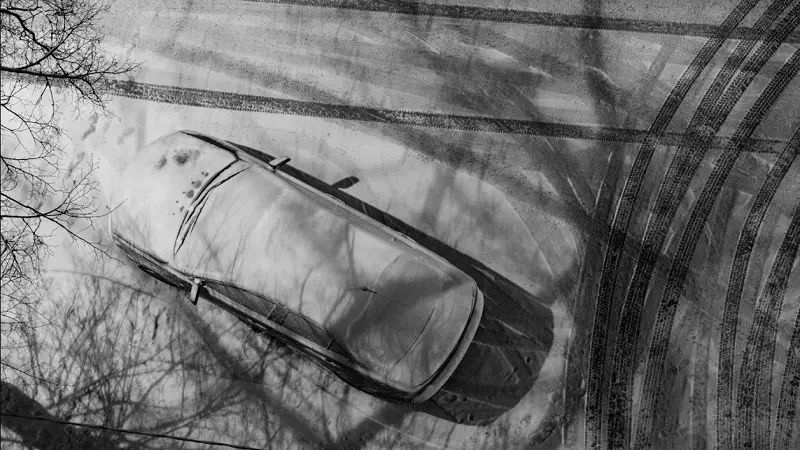You’re driving down I-64 on a rainy St. Louis evening. Suddenly, your car skids, sending you careening into another vehicle. You might be a brilliant driver, but, you cannot do much if the incessant rains have other plans.
St. Louis is known for its extreme climate, with icy sidewalks and rain-slicked roads wreaking havoc every year. In your hypothetical case, can you blame the other car? Or, what are your options when the other person involved sues you? Can you blame the rains then?
When inclement weather is involved, the legal landscape becomes as treacherous as the roads. The complexities of personal injury involve comparative negligence, proving fault, and securing rightful compensation. The mere mention of these regulatory verticals can make you nervous.
That’s why we’re here to shed light on the legal perspective of weather-related accidents in St. Louis. Join us as we explore the essential knowledge you need to protect yourself and your loved ones after an accident.
Navigating the Complexities of Comparative Negligence
When the weather takes a turn for the worse in St. Louis, accidents can happen in the blink of an eye. In January 2022, Missouri witnessed more than 30 accidents involving trucks owned by the Missouri Department of Transportation (MoDOT). The accidents were a result of the ice storm, causing extremely poor visibility.
Whether you’re a driver navigating rain-clad roads or you are hit by a car trying to cross a sidewalk, the concept of comparative negligence looms large here. This legal principle, which is used to determine fault, can be as tricky to understand as predicting the next big snowstorm.
It’s a system that tries to distribute the responsibility for the accident. Here, you can claim for compensation mounting to your harm. However, if the investigation reveals that even you are at fault, albeit to a small extent, your compensation will be reduced accordingly.
For the example of a car accident in St. Louis cited above, the insurance company will look at factors like your speed, the condition of your tires, and whether you were driving safely in the weather conditions. If they determine that you bear some responsibility for the accident, say goodbye to full compensation.
Proving Negligence: Building a Strong Case
In St. Louis, proving negligence in weather-related accidents requires a robust, strategic approach. For starters, police reports from the St. Louis Metropolitan Police Department and witness statements can provide crucial details about the circumstances surrounding the incident.
Moreover, you can also resort to weather data from the National Weather Service’s St. Louis office to establish the conditions at the time of the accident.
The most important set of evidence that can aid or weaken your stance comes from the traffic laws and regulations outlined in the Missouri Revised Statutes. For example, Section 304.012 requires drivers to exercise the highest degree of care when operating a vehicle. This is particularly relevant and legally important in inclement weather cases.
According to TorHoerman Law, thorough documentation, including photographs of the accident scene and detailed records of any injuries or damages sustained, is essential for building a strong case.
Lastly, if you can, and if the court allows, fall back on your dashcam footage. Although it can provide a unique perspective on the accident and help support a claim, the court relies heavily on its integrity. You have to be sure that no one gets a hand on the tape and hampers its authenticity.
All of this looks and is very difficult to execute alone, and that too, while nursing injuries. As a resident of St. Louis, always hire a St. Louis personal injury lawyer to help you in these times.
These are experienced professionals who will fight tooth-and-nail for you against the insurance companies for a just recompense. Moreover, these lawyers will also help you gather evidence for your stance.
Drivers’ Duties and Dilemmas
As a driver, you’re not just responsible for your safety, but also for the well-being of your passengers and fellow motorists. You must exercise a reasonable degree of care when behind the wheel, especially during inclement weather.
The Missouri law demands that you have your headlights on while driving at night, especially in bad weather. Also, it bans you from using colored lights when on the road.
Moreover, you must be careful about your car’s condition. Keep your car in proper shape. It is no secret that bald tires and worn brakes can transform even a minor drizzle into a treacherous journey.
Missouri Revised Statutes Section 304.017, requires drivers to maintain a safe distance from other vehicles. The state’s transport department also advises drivers to reduce their speed by at least one-third on wet roads and by half or more on snow-covered roads.
You also need to be very clear about the weather forecast and warnings. If you fail to pay heed and are caught, for example, in an accident after a snowstorm, you could be held liable for your accident. The responsibility to be safe and keep others safe lies with you.
To sum up, in the face of St. Louis’s unpredictable weather, understanding your legal rights and responsibilities as a driver or pedestrian is crucial. While navigating the complexities of comparative negligence and proving fault may seem daunting, it is a necessary step in protecting yourself and your loved ones.
Stay informed, take proactive measures to ensure your safety, and seek the guidance of experienced legal professionals when needed. Remember, knowledge is power, and by arming yourself with the tools to navigate the legal landscape, you can weather any storm that comes your way.
